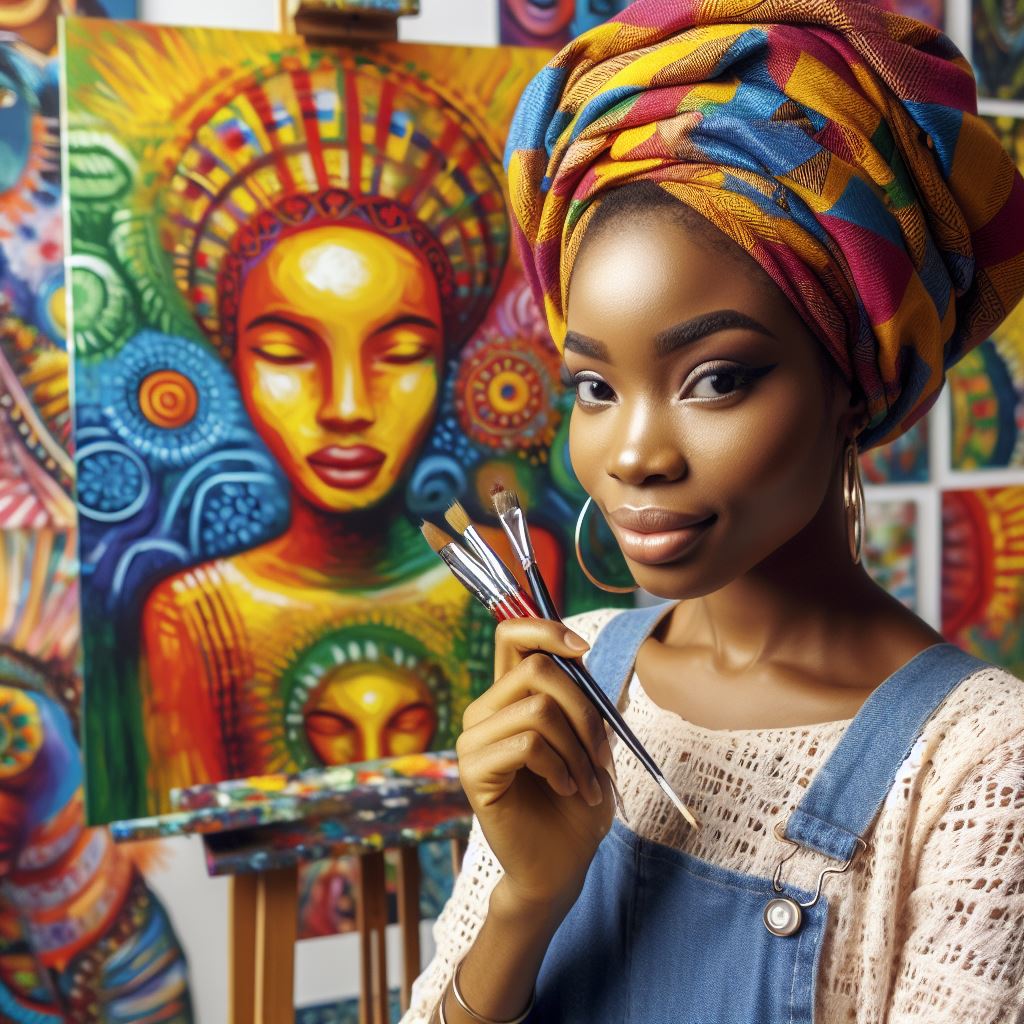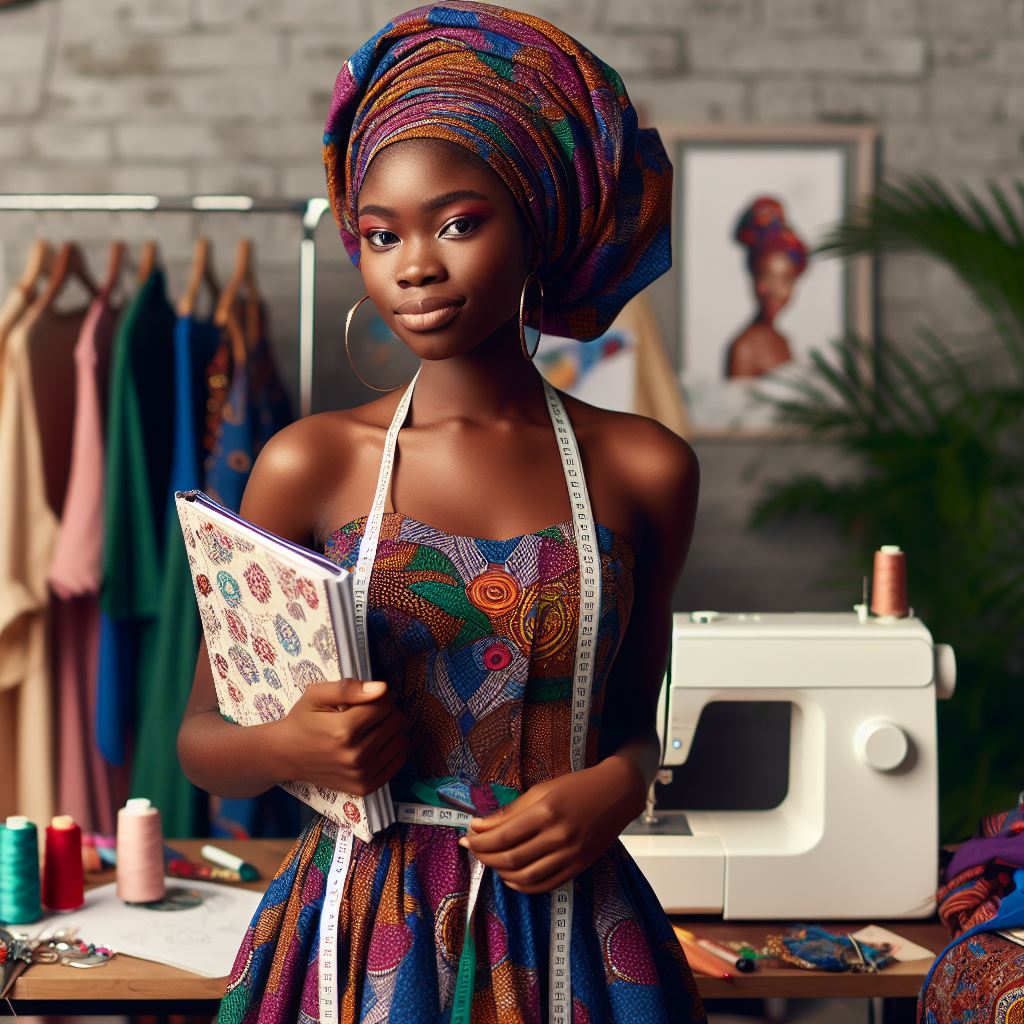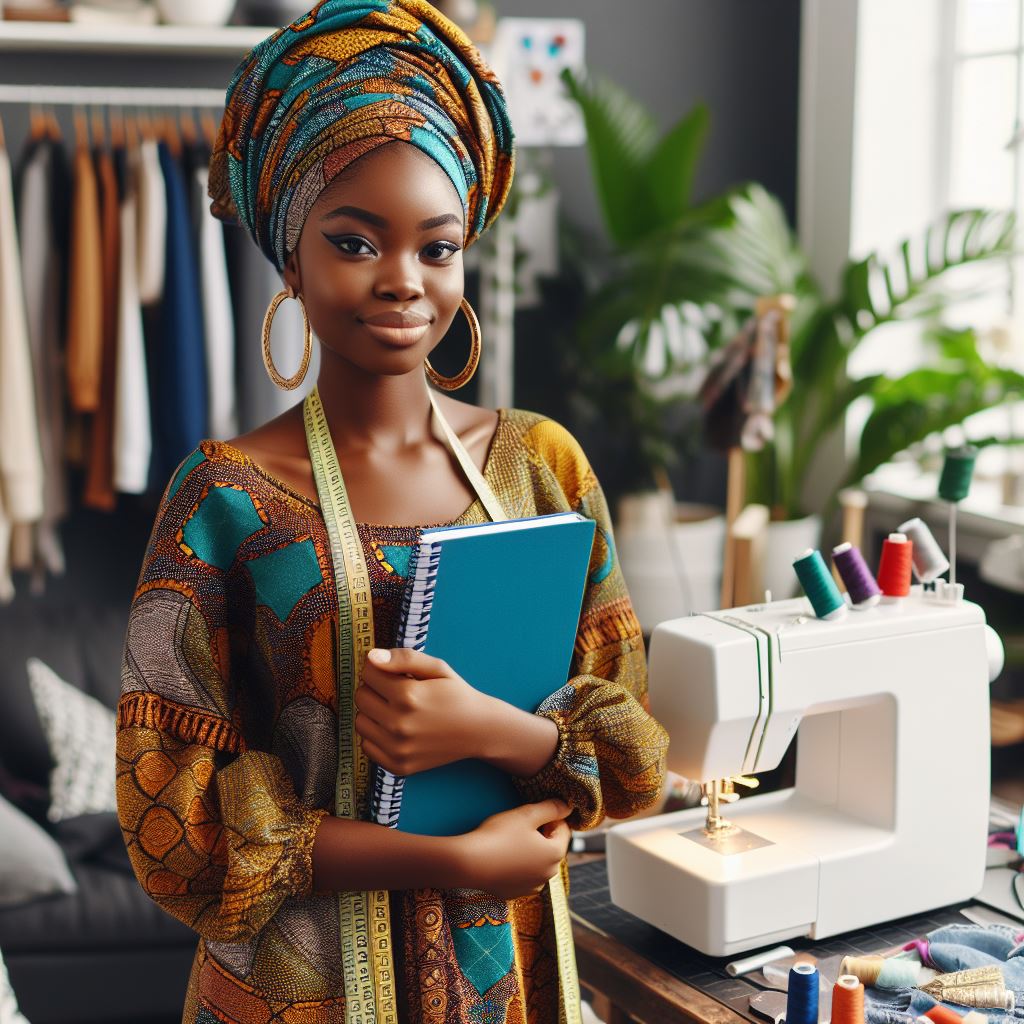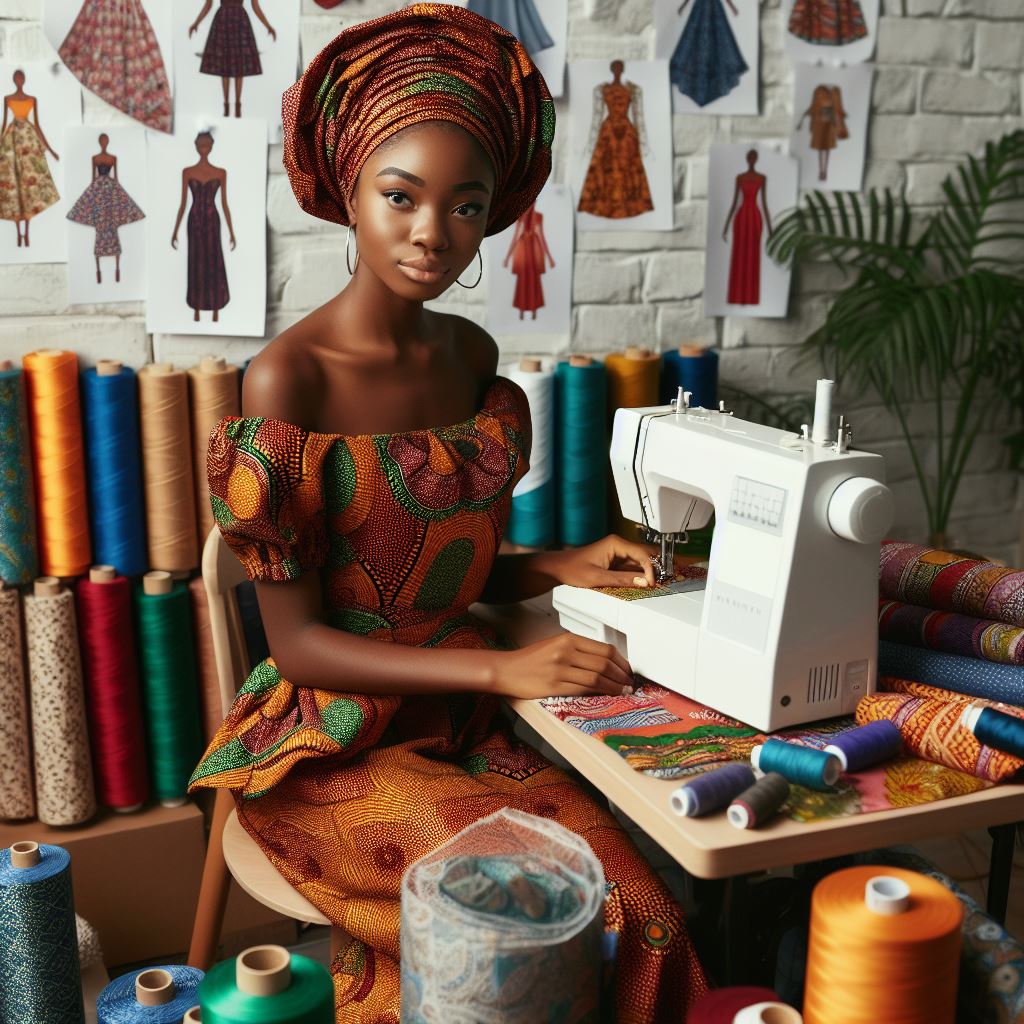Introduction
Art as a tool for education refers to utilizing creative expressions like drawing, painting, and music to enhance learning experiences. Incorporating art into the educational system in Nigeria is crucial for fostering holistic development and critical thinking skills among students.
By integrating art into the curriculum, students are encouraged to think outside the box and explore their creativity. This not only enhances their artistic skills but also improves their problem-solving abilities.
Furthermore, art serves as a medium for self-expression, allowing students to communicate their thoughts and emotions in a non-verbal manner. This can be especially beneficial for those who may struggle with traditional forms of communication.
Moreover, engaging in artistic activities can boost students’ confidence and self-esteem. Through art, they can showcase their talents and receive positive feedback, which can motivate them to excel in other areas of their academic life.
Overall, the incorporation of art in education is essential for nurturing well-rounded individuals who are not only academically proficient but also creative, empathetic, and innovative.
Thus, it is imperative for the Nigerian educational system to recognize the significance of art in shaping the future generation.
History of art in education in Nigeria
Brief overview of how art has been used in education in Nigeria in the past
In Nigeria, the use of art in education dates back to ancient times when traditional art forms were integrated into cultural practices and rituals.
Art was used as a means of communication, storytelling, and preserving cultural heritage. It played a significant role in shaping the values and beliefs of the society.
key developments and changes in the use of art for educational purposes
- Colonial Influence: During the colonial era, Western art education was introduced in Nigeria, leading to the establishment of formal art schools and institutions. This marked a shift from traditional art forms to more academic and structured art education.
- Independence Era: After gaining independence, there was a resurgence of interest in promoting Nigerian art and culture in education. This period saw a renewed focus on integrating indigenous art forms into the curriculum to foster a sense of national identity and pride.
- Curricular Reforms: In recent years, there have been efforts to incorporate art education into mainstream academic programs at all levels of education. The government and educational institutions have recognized the importance of art in fostering creativity, critical thinking, and problem-solving skills among students.
- Technological Advancements: The digital age has revolutionized the way art is taught and learned in Nigeria. Online resources, virtual art galleries, and multimedia tools have made art education more accessible and interactive for students. This has expanded the scope of artistic expression and creativity in the educational system.
- Community Engagement: Art initiatives and projects that involve the local community have been instrumental in promoting art education in Nigeria. Collaborations between schools, artists, and community groups have created opportunities for students to learn from practicing artists, participate in art workshops, and showcase their work to a wider audience.
Overall, the history of art in education in Nigeria reflects a dynamic evolution from traditional practices to modern approaches that emphasize creativity, inclusivity, and cultural diversity.
The integration of art into the educational system has the potential to empower students, enhance their learning experiences, and contribute to the development of a vibrant and culturally rich society.
Read: Introduction to African and Asian Studies in Nigeria
Benefits of using art as a tool for education in Nigeria
Enhances creativity and critical thinking skills
Art in education allows students to think outside the box, fostering creative solutions to problems.
Provides a holistic approach to learning
Art engages students on multiple levels – visually, emotionally, and intellectually, offering a comprehensive learning experience.
Fosters emotional intelligence and self-expression
Through art, students can express their feelings and emotions, developing a deeper understanding of themselves and others.
In Nigeria, where education systems can sometimes be rigid and focused on rote memorization, incorporating art into the curriculum can have numerous benefits for students.
By integrating art into education, students are encouraged to think creatively and critically, skills that are essential for success in the modern world. Art allows students to explore different perspectives, leading to a more well-rounded and open-minded approach to problem-solving.
Moreover, art provides a holistic approach to learning that goes beyond traditional subjects.
It engages students in ways that textbooks alone cannot, making learning more interactive and engaging. This approach can help students retain information better and apply their knowledge in real-world situations.
Emotional intelligence is another crucial aspect of education that can be developed through art. By creating and interpreting art, students learn to identify and express their emotions effectively. This skill is essential for personal well-being and building positive relationships with others.
Self-expression is also a key benefit of using art in education.
In a country as diverse as Nigeria, allowing students to express themselves through art can help foster a sense of identity and belonging. Art can be a powerful tool for marginalized groups to share their stories and advocate for social change.
Basically, the benefits of using art as a tool for education in Nigeria are numerous. From enhancing creativity and critical thinking skills to fostering emotional intelligence and self-expression, art plays a vital role in shaping well-rounded and empathetic individuals.
It is essential for educators to recognize the value of art in education and integrate it into the curriculum to provide a richer and more meaningful learning experience for students.
Read: Famous Nigerian Alumni of Communication Arts Programs
Challenges and barriers to incorporating art into education in Nigeria
Lack of Resources and Funding for Art Programs
Incorporating art into education in Nigeria faces significant challenges and barriers.
A major obstacle is the lack of resources and funding for art programs.
Schools often prioritize subjects deemed more critical, such as mathematics and science, leaving art programs underfunded.
Without sufficient financial support, schools cannot afford essential art supplies, proper facilities, or qualified art teachers.
This scarcity of resources directly impacts the quality and availability of art education.
Limited Awareness and Understanding of the Value of Art in Education
Another challenge is the limited awareness and understanding of the value of art in education.
Many educators, parents, and policymakers do not recognize the benefits that art can offer.
They often see it as an extracurricular activity rather than a core component of a well-rounded education.
This misconception leads to a lack of support for integrating art into the curriculum.
Art education fosters creativity, critical thinking, and emotional development, essential skills for students’ overall growth.
However, this value is frequently overlooked.
Emphasis on Traditional Academic Subjects Over Arts Education
Furthermore, there is an emphasis on traditional academic subjects over arts education.
In Nigeria, the education system heavily focuses on subjects like mathematics, science, and language arts.
These subjects are considered vital for academic success and future employment opportunities.
As a result, arts education is often sidelined or completely omitted from the curriculum.
This focus on traditional subjects creates an imbalanced education system that neglects the holistic development of students.
The lack of trained art educators also poses a significant barrier.
Even when schools attempt to include art in their programs, they often struggle to find qualified teachers.
Many teachers in Nigeria are not adequately trained to teach art effectively.
This lack of expertise affects the quality of art education students receive, further devaluing the subject in the eyes of stakeholders.
Training and professional development for art teachers are crucial but often neglected due to budget constraints.
Additionally, cultural attitudes towards art can be a barrier.
In some communities, art is not viewed as a viable career path or valuable skill.
This cultural perspective discourages students from pursuing art seriously and parents from supporting their children’s interest in art.
Changing these deep-seated attitudes requires awareness campaigns and showcasing successful artists who have thrived despite these challenges.
To address these issues, there needs to be a concerted effort from all stakeholders.
The government should allocate more funding to arts education and recognize its importance in the national curriculum.
Schools should advocate for the integration of art programs and seek partnerships with organizations that support arts education.
Additionally, professional development opportunities for teachers must be provided to improve the quality of art instruction.
Read: Exploring Semiotics in Communication Arts
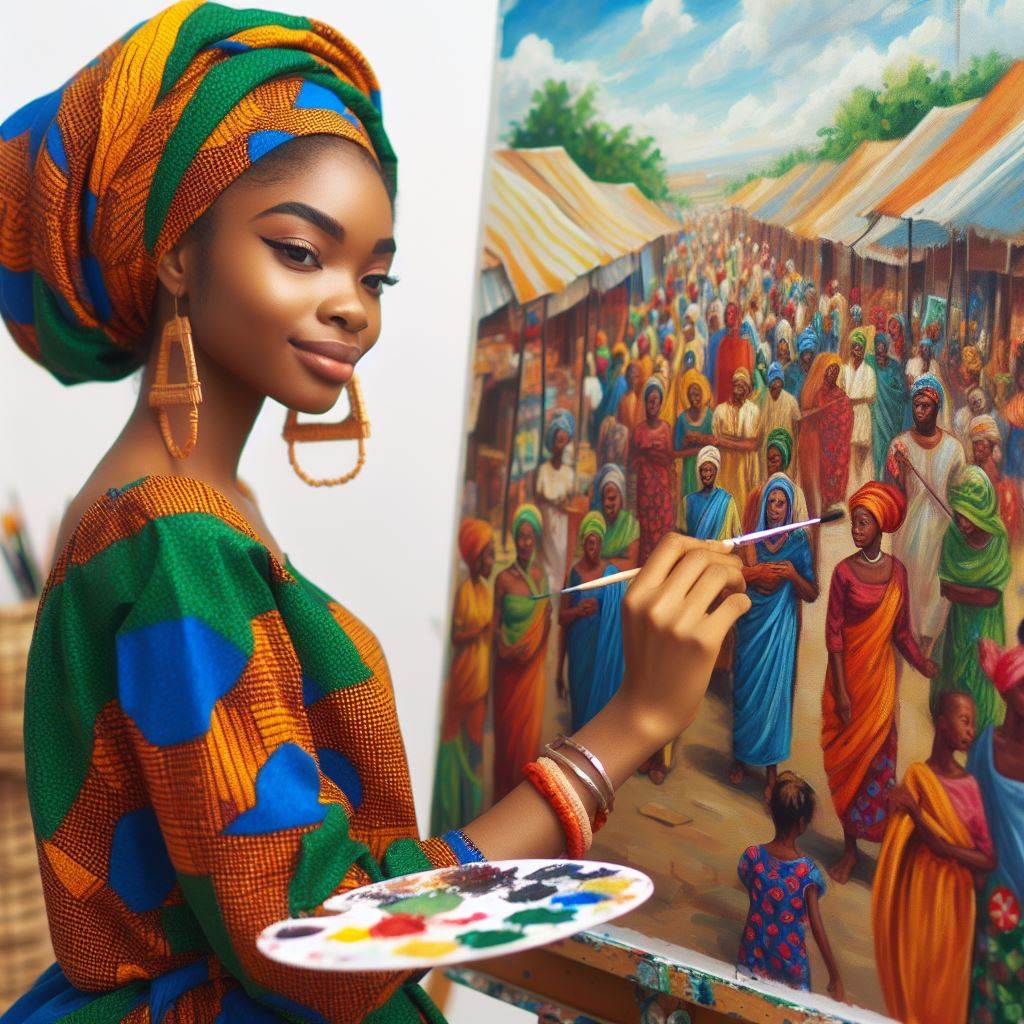
Successful examples of using art for education in Nigeria
- Arts in Education Initiative: This program integrates visual arts, music, and drama into school curricula.
- Children’s Development Centre: Utilizes art therapy to support children’s emotional and cognitive development.
- Wale Adenuga Productions: Their educational TV shows incorporate art to teach moral values and life skills.
- African Artists’ Foundation: Organizes workshops connecting artists with schools to teach creative expression.
- Mbari Uno Foundation: Promotes literacy through storytelling, visual arts, and theater performances in communities.
Impact and Outcomes
- Enhanced Cognitive Skills: Art integration stimulates critical thinking, problem-solving, and creativity among students.
- Improved Academic Performance: Students engaged in art-based learning demonstrate better academic achievement across subjects.
- Emotional Well-being: Art therapy interventions help students manage stress, trauma, and emotional challenges effectively.
- Cultural Awareness: Exposure to diverse art forms fosters appreciation for Nigeria’s rich cultural heritage and diversity.
- Community Engagement: Art initiatives create platforms for community involvement, fostering social cohesion and collaboration.
Art serves as a powerful educational tool in Nigeria, enriching learning experiences and fostering holistic development among students.
Through successful initiatives by schools, organizations, and individuals, art integration has demonstrated numerous positive outcomes, including improved academic performance, enhanced cognitive skills, and emotional well-being.
By highlighting these examples, it becomes evident that art plays a transformative role in shaping education and empowering Nigerian youth for a brighter future.
Read: Language Arts Courses: What to Expect in Nigeria
Advocacy for the inclusion of art in the curriculum
Advocacy efforts should focus on demonstrating the value of art in enhancing critical thinking skills.
Highlighting the importance of creativity and innovation that art education can cultivate is crucial.
Engaging policymakers and education stakeholders to understand how art can positively impact learning outcomes is essential.
Emphasizing the role of art in promoting cultural awareness and diversity can help garner support for its inclusion.
Advocates should also underscore the holistic benefits of art education in fostering social-emotional development among students.
Capacity building for teachers to effectively incorporate art into their teaching
Organizing professional development workshops for educators on integrating art across subjects can be beneficial.
Providing teachers with resources, lesson plans, and training opportunities to enhance their art teaching skills is vital.
Encouraging collaboration among teachers to share best practices and ideas for incorporating art in the classroom can be effective.
Offering incentives such as grants or awards for innovative art-based teaching methods can motivate educators.
Supporting teachers in acquiring art supplies, materials, and technology to facilitate art instruction is essential.
Collaboration between schools, artists, and community organizations to support arts education
Establishing partnerships between schools and local artists to provide hands-on art experiences for students is valuable.
Encouraging community organizations to sponsor art programs, exhibitions, or workshops in schools can enrich arts education.
Creating mentorship programs where artists work with students to develop their artistic skills and creativity is beneficial.
Organizing art festivals, competitions, or showcases in collaboration with community partners can showcase students’ talents.
Engaging parents, alumni, and other stakeholders in supporting art initiatives through donations or volunteering can strengthen arts education.
Conclusion
Recap of Art’s Educational Importance
Art fosters creativity, critical thinking, and emotional intelligence among students.
Art integration enhances academic performance and cognitive skills across various subjects.
Exposure to art builds cultural awareness and appreciation for Nigeria’s diverse heritage.
Art initiatives promote community engagement and social cohesion, uniting people through shared creative experiences.
Transform Your Career with Expert Guidance
Get personalized mentorship consulting that’s tailored to your unique path. Our expert advice is actionable and exclusive.
Get StartedCall to Action for Stakeholders
- Educational Institutions: Prioritize art programs in curricula to foster well-rounded student development.
- Government: Allocate funds and resources to support and expand arts education nationwide.
- Non-Profits and NGOs: Partner with schools to provide access to art workshops and materials.
- Community Leaders: Encourage local art projects and events that involve students and educators.
- Parents and Guardians: Support children’s participation in art activities both in and out of school.
Art as an educational tool holds immense potential for Nigeria’s future. Stakeholders must invest in and prioritize arts education to nurture creativity, cultural awareness, and holistic development in young Nigerians.
By doing so, we can build a more innovative, united, and culturally enriched society.

